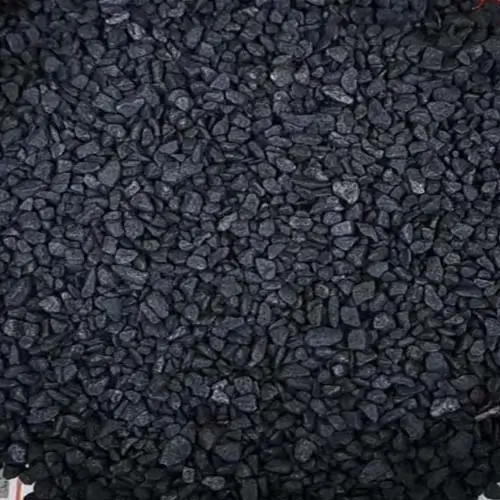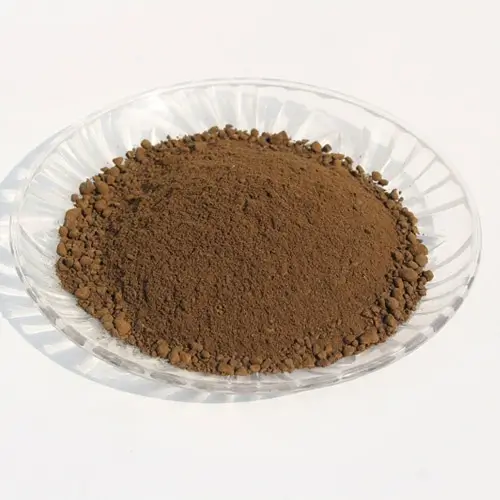The application of top-bottom combined blowing technology and slag splashing technology in converters has expanded converter smelting products and significantly improved quality and production efficiency. However, tapping, the final step in the converter steelmaking process, has become a crucial factor influencing smelting quality, output, and product variety. The service life, replacement time, and repair life of the taphole directly impact steelmaking efficiency and the converter smelting cycle. The sintering time and service life of converter taphole repair material directly impact steelmaking production.
Converter taphole repair material is a maintenance material used during taphole replacement or repair. Since the adoption of the slide plate slag blocking process at Henan Jigang No. 1 Steel Plant, the replacement of the taphole pipe bricks has placed stricter requirements on the integrity of the taphole seat bricks and higher positioning accuracy. The traditional replacement method has been difficult to meet the process requirements of high-quality steel, and the entry of a large amount of repair materials has an impact on the quality of the molten steel that cannot be ignored. In response to the above-mentioned defects in the converter repair process, Jigang and Ma’anshan Lier Refractory Materials Co., Ltd. jointly researched and developed a new type of taphole repair material, pioneered new thinking, and used a new method for repair, achieving satisfactory results on Jigang’s two 120-ton converters.
1.Taphole repair method
While the nominal capacities of converters owned by Chinese steel companies vary, their taphole repair methods are generally the same. There are two common methods. One is to use a small gunning machine. After installing a new taphole pipe brick, a semi-dry gunning material is sprayed around the pipe bricks. This material typically contains around 15% moisture. After entering the furnace, some of the water in the gunning material rapidly boils and evaporates, while the remaining water combines with the gunning material and sinters around the pipe bricks, protecting them. The other method involves spraying water directly onto the repaired area with a cast material. Under the high temperature of the furnace, some of the water combines with the cast material and sinters to form a protective layer.

2.Disadvantages of the two gunning methods
Although the above two methods solve the problem of replacing the taphole pipe bricks and repairing the surrounding corroded parts, ensuring the normal progress of smelting, they also have the following obvious defects.
(1) The lining of the converter is made of magnesia carbon bricks. A large amount of water enters the high-temperature furnace, causing the working surface of some lining bricks to quickly hydrate and form Mg(OH)2. The consequence is that the bricks become powdery, expanded, and loose, and lose their lining function. The specific reaction formula is:
MgO+H2O→Mg(OH)2
(2) Due to the sudden cooling effect caused by the entry of water into the furnace, cracks appear at the interface between the transition layer and the unchanged layer of the lining bricks. As water is continuously added, the cracks gradually expand and form cracks, that is, the bricks break. A considerable part of the bricks will automatically fall off and eventually develop into pits.
(3) The moisture brought to the tapping mouth by semi-dry gunning materials and artificial water spraying, especially the amount of artificial water spraying is difficult to control, which seriously damages the quality of the lining around the tapping mouth and the tapping mouth seat bricks. The main manifestation is that the bricks in this area are prone to damage, looseness, lack of strength, and rapid corrosion. Therefore, steel seepage and steel leakage at the tapping mouth are inevitable. Once the tapping mouth leaks steel, it is particularly difficult to repair, which has a significant impact on the normal operation of the converter.
(4) The presence of water in the furnace not only destroys the atmosphere in the furnace, but also poses many hidden dangers such as safety and steel leakage. The magnesia carbon bricks of the converter should avoid hydration at room temperature, let alone at high temperature. Therefore, every time the taphole pipe bricks are replaced, the lining bricks, seat bricks and pipe bricks will be damaged to varying degrees, thus greatly shortening the service life of the parts. In the middle and late stages of the parts, deep nipple-shaped pits will often form in the parts. The service life of the pipe bricks is also relatively low, generally maintained within 200 furnace cycles. The frequent replacement of the taphole pipe bricks does not include the damage of water vapor to other lining bricks in the furnace.
(5) The frequent replacement of the taphole pipe bricks during the entire furnace life makes the use environment of the surrounding parts more and more severe, especially the taphole seat bricks. In the later stage, it is difficult to see the original appearance. Not only does the repair material increase significantly, but the repair becomes more and more difficult and the repair time becomes longer and longer. At present, the main task of a considerable number of domestic converters in the later stage of use is to repair the taphole. The 120-ton converter of Jigang uses the above method to replace the taphole pipe bricks, plus the replacement of the slag plate, and the total time is about two and a half hours.
3.Preparation of new taphole repair material
1.Main raw materials
Magnesia or magnesia-carbon materials offer excellent corrosion resistance. Based on the intended use of the repair material, the primary raw materials for the new taphole repair material are high-purity sintered magnesia granules, a portion of fused magnesia granules, and fused magnesia fine powder. The choice of binder is crucial for the repair material, directly impacting its various physical and chemical properties. In addition to ensuring compatibility with the primary raw materials and high bond strength, the binder’s curing method, curing time, material flow characteristics, and wettability, among other factors, must also be considered to influence its application performance. A good binder must achieve both excellent flow and a short curing time. Because the primary raw material, sintered magnesia, is a lean material, asphalt and phenolic resin have good affinity and wettability, easily binding the magnesia together and exhibiting excellent high-temperature flow properties. This experimental taphole repair material utilizes a novel binder blended in a specific proportion of high-quality, medium-temperature modified asphalt, an antioxidant, powdered phenolic resin, a flow aid, and a sintering aid.
2.Preparation of repair material
80% to 90% of high-quality medium-temperature modified asphalt, 1% to 3% of antioxidant, 1% to 5% of powdered phenolic resin, 2% to 10% of flow aid and 3% to 6% of sintering aid are mixed for 8 minutes to prepare a binder; high-purity sintered magnesia particles and fused magnesia particles are added to a mixer and mixed evenly for 5 minutes, and then 1% to 3% of the total mass of 0# diesel is added and mixed for 5 minutes to ensure that the diesel completely wets the magnesia particles, and then fused magnesia fine powder and 10% to 20% of the above-prepared binder are added, stirred and mixed for 10 minutes to prepare a new steel outlet repair material.
From the above physical and chemical indicators, the IL value can be judged that the self-flowing material not only flows by itself but also burns during the flow. Its material is magnesia, but after sintering it becomes low-carbon magnesia-carbon, that is, it has a fixed carbon structure to enhance the repair strength of the material.
The IL value can be judged that the self-flowing material not only flows by itself but also burns during the flow. Its material is magnesia, but after sintering it becomes low-carbon magnesia-carbon, that is, it has a fixed carbon structure to enhance the repair strength of the material.

4.Application of new taphole repair material
When replacing the taphole pipe bricks and installing the slide plate, the repair operation is extremely simple. The specific implementation steps are as follows:
(1) Mechanically remove the remaining pipe bricks at the tapping port. See Figure 1.
(2) Place the integrally bonded pipe bricks into the tapping port, along with the inner water inlet of the slide, position them, secure them, and seal them with Martin sand. See Figure 2.
(3) After the furnace is turned over and a certain amount of repair material is poured into the charging side of the converter through the hopper according to the corrosion condition around the tapping port, tilt the converter. Tilt it toward the tapping port until the self-flowing material seals the gap between the pipe bricks and the base bricks and fills the surrounding pits. The converter can be repeatedly shaken several times with small and rapid movements. After the repair is completed, the repair material can be sintered for about 15 minutes using the furnace temperature, and then the slide can be installed and production can be organized.

After nearly three months of multiple trials, the First Steel Plant of Jigang has gained relatively mature operating experience. Currently, the self-flowing material has been stably used in two 120-ton converters.
Tests at the steel mill have shown that this patching material prevents corrosion of the inner lining by external moisture, increases furnace temperatures, and extends the service life of the taphole pipe bricks to approximately 300 repairs. The taphole repair time has been reduced from 40 minutes to less than 30 minutes, with the average sintering time reduced by approximately 10 minutes. The replacement time for the taphole pipe bricks has been significantly shortened from approximately 2.5 hours with traditional methods to approximately 1 hour and 10 minutes, a 50% reduction. The patching material not only exhibits excellent construction performance but also effectively secures the taphole pipe bricks, with no signs of spontaneous shedding during use. The reason for this is that the introduction of diesel into the new taphole repair material makes the particles fully wetted, and the interior of the repair material is fully sintered under the action of high temperature, thereby improving the sintering efficiency; the high-quality medium-temperature modified asphalt in the binder makes the repair material have good fluidity at high temperatures, and the asphalt forms a uniformly staggered carbon network structure with powdered phenolic resin during the sintering process, and the addition of a flow aid can greatly improve the fluidity of the repair material; the introduction of the sintering aid not only promotes sintering, but also improves the strength of the repair material by reaction at high temperature; the introduction of the metal antioxidant makes it react with C to produce a reinforcing phase at high temperature, which plays a role in fiber toughening and improves the strength of the repair material. Therefore, the new taphole repair material takes into account both high-temperature fluidity and sintering performance.
(1) The new repair method completely prevents a large amount of external moisture from entering the furnace, avoids the adverse reaction between moisture and the lining, ensures the relative stability of the temperature and atmosphere in the furnace, and increases the service life of the lining.
(2) As the material enters the furnace, as it flows and burns, it will not cause a sudden drop in the furnace temperature like the traditional method, but will increase the furnace temperature. Its full combustion will not cause pollution to the environment.
(3) The working principle of this new self-flowing material is to sinter while flowing, and due to its good fluidity, it can well seal the gap between the tapping hole seat brick and the pipe brick, and quickly fill the pits around the tapping hole.
(4) Through tracking observation, the material has good high-temperature performance, high strength after sintering, and resistance to molten steel erosion. It has a long residual time, which greatly reduces the number of material additions and usage. The replacement time of the tapping hole pipe brick is shortened by 1h20min, and the service life of the tapping hole pipe brick is also increased to about 300 times.
